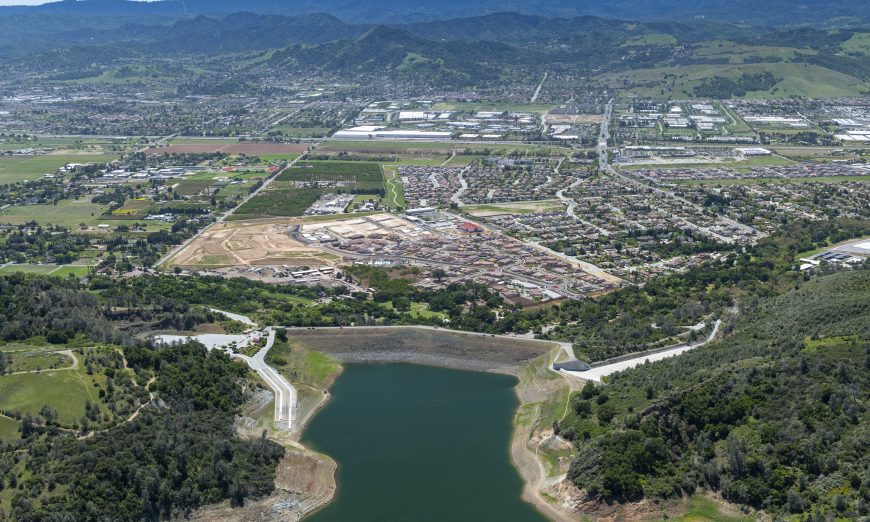The Santa Clara Valley Water District has been lowering the water level on the Anderson Dam since Oct. 1 to keep the region safe from potentially catastrophic flooding in the event of a major earthquake.
The Anderson Reservoir can hold up to 90,000 acre-feet of water and is now at three percent capacity, which is the lowest feasible level given the position of the existing outlet tunnel. At its current level, even a heavy rainy season would not pose dam failure and flooding risk; keeping some water in the reservoir helps preserve some wildlife habitat. Beyond immediate safety, one of the main reasons for lowering the water level is to allow for construction to begin on a major seismic retrofit project for the dam. The reservoir has been closed for recreational use since October and is expected to remain shuttered for the duration of the project.
At a recent press conference, Valley Water District 1 Director John Varela underscored the need for bringing the dam up to modern standards by pointing out that two earthquakes, magnitudes 3.5 and 3.7, recently struck around the dam. Although no damage resulted from the earthquakes, previous studies indicated that a magnitude 7.25 on the Calaveras fault or a 6.6 on the Coyote Creek fault could cause serious damage.
“This is why this seismic retrofit of Anderson Dam is Valley Water’s top priority,” said Varela.
With the water levels lowered, construction is expected to begin on an outlet tunnel in spring 2021. A 1,700 foot-long tunnel will be built, 24-feet in diameter to the left of the dam when facing the reservoir. The new tunnel along with the existing outlet will allow for five times more water to be released from the reservoir and permit greater control on water levels. The work is expected to take two to three years.
Valley Water is currently trying to secure permits for the $550 million Anderson Dam Seismic Retrofit Project, which is expected to begin in 2024 and be completed in 2030-31 or earlier. The project will entail a retrofit of the dam embankment and spillway once the tunnel is complete. The spillway wall height will be raised by nine feet and the dam crest by seven feet.
Since fall, Valley Water has been releasing water from the reservoir at a rate of about 65 million gallons per day and will continue to release water if there’s storm runoff from heavy rains this winter — striving to maintain the three percent level. Much of the released water is sent to the water treatment plants and to Coyote Creek to help refill the groundwater basin. Valley Water Chief Operating Officer Aaron Baker said that water is being imported for use by Santa Clara County consumers and that water shortages are not a current concern.
Because the reservoir’s drainage poses risk to sensitive species of wildlife such as the Central California Coast Steelhead, beginning this August, biologists have been relocating fish from the reservoir to the Coyote Creek Watershed.
“Most fish and the ecosystem will be able to persist in Coyote Creek because water will continue to flow,” said Lisa Porcella, environmental services manager at Valley Water. “However, the warmer water from San Luis is not ideal for the more sensitive steelhead.”







